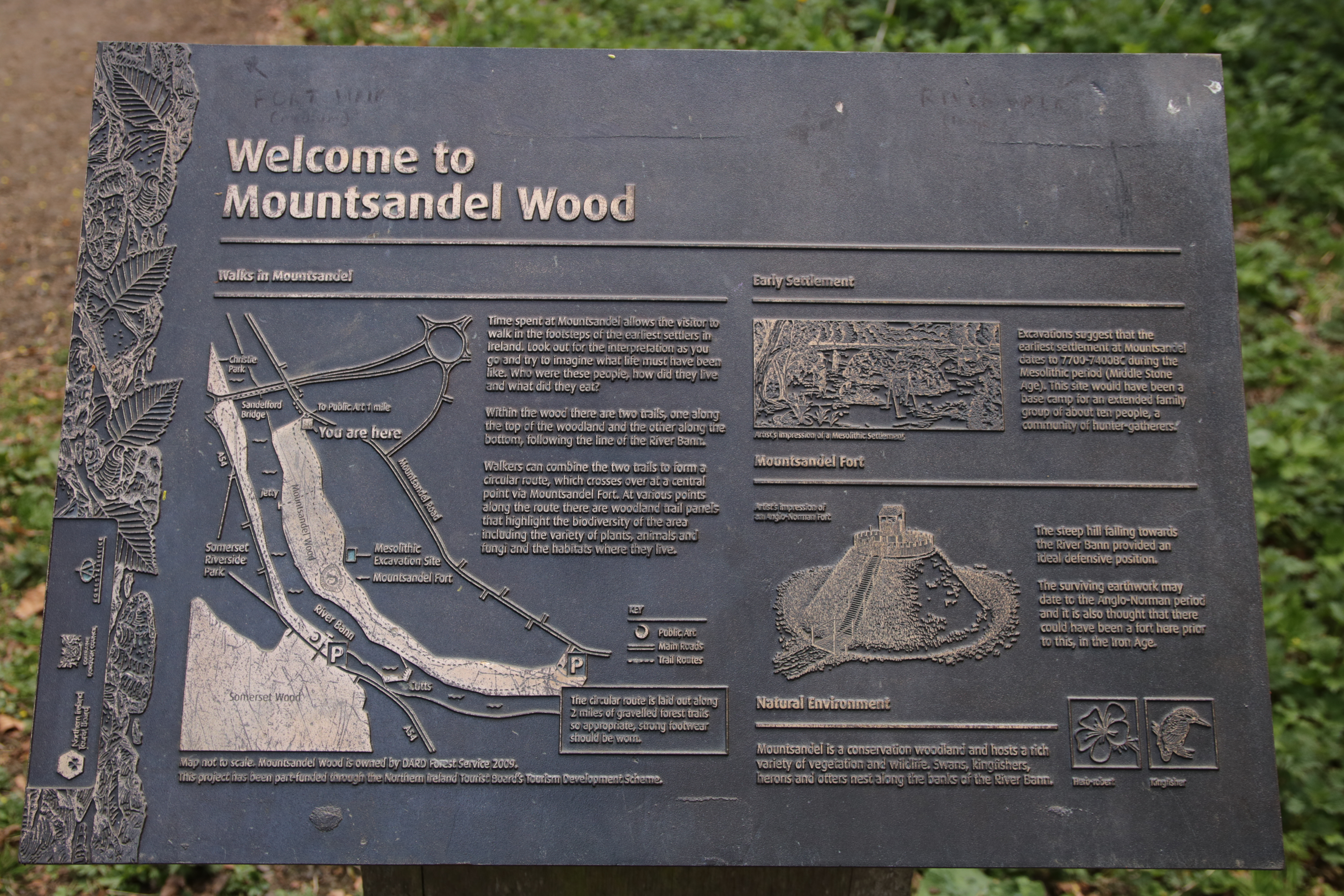

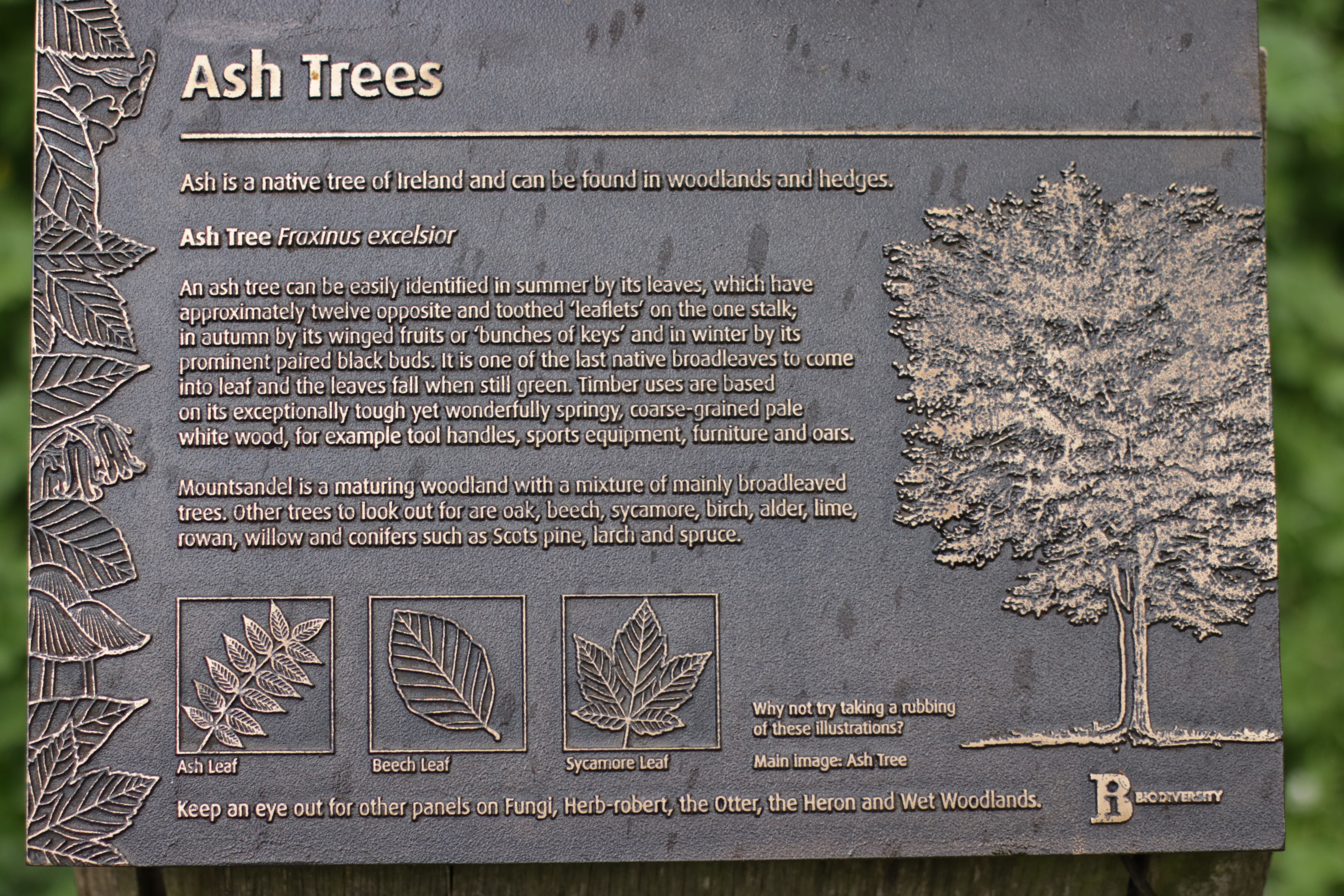

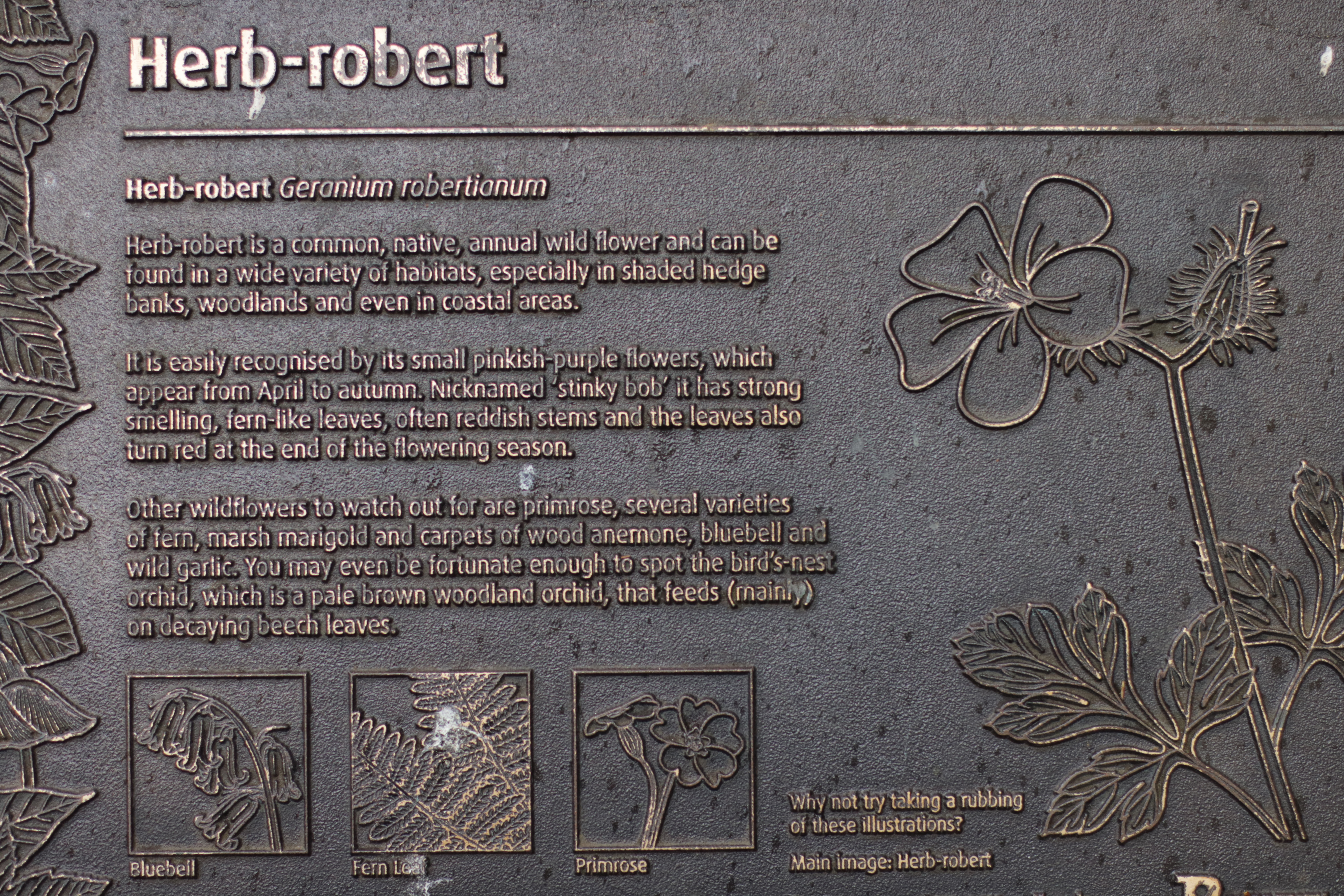


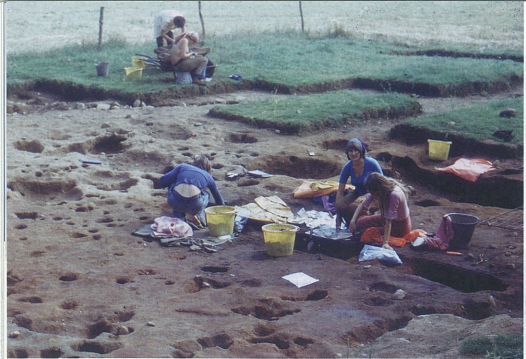
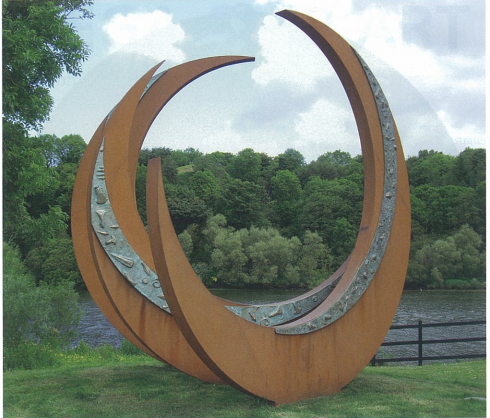

Time spent at Mountsandel allows the visitor to walk in the footsteps of the earliest settlers in Ireland. Look out for the interpretation as you go and try to imagine what life must have been like. Who were these people, how did they live and what did they eat?
Within the wood there are two trails, one along the top of the woodland and the other along the bottom, following the line of the River Bann.
Walkers can combine the two trails to form a circular route, which crosses over at a central point via Mountsandel Fort. At various points along the route there are woodland trail panels that highlight the biodiversity of the area including the variety of plants, animals and fungi and the habitats where they live.

An ash tree can be easily identified in summer by its leaves, which have approximately twelve opposite and toothed ‘leaflets’ on the one stalk; in autumn by its winged fruits or ‘bunches of keys’ and in winter by its prominent paired black buds. It is one of the last native broadleaves to come into leaf and the leaves fall when still green. Timber uses are based on its exceptionally tough yet wonderfully springy, coarse-grained pale white wood, for example tool handles, sports equipment, furniture and oars.
Mountsandel is a maturing woodland with a mixture of mainly broadleaved trees. Other trees to look out for are oak, beech, sycamore, birch, alder, lime, rowan, willow and conifers such as Scots pine, larch and spruce.

Fungi come in a variety of colours, shapes and sizes, and can occur all year round. In autumn, mushrooms and toadstools can appear in great numbers as the earth has warmed up, and the warm, damp weather encourages fungi to grow. One of the easiest to recognise here at Mountsandel is the jelly ear fungus. It is well-named as its form folds and whirls, while it grows on trunks and bark of usually dead trees.
Fungi can be difficult to identify, but look out for the variety of colours and shapes, from bracket or ‘shelf’ fungi on standing trees to typical mushroom shaped fungi in leaf litter and on dead wood. Others to watch out for are the glistening ink cap and little fairy ink cap, which grow in large groups in woodland areas.

Herb-robert is a common, native, annual wild flower and can be found in a wide variety of habitats, especially in shaded hedge banks, woodlands and even in coastal areas.
It is easily recognised by its small pinkish-purple flowers, which appear from April to autumn. Nicknamed ‘stinky bob’ it has strong smelling, fern-like leaves, often reddish stems and the leaves also turn red at the end of the flowering season.
Other wildflowers to watch out for are primrose, several varieties of fern, marsh marigold and carpets of wood anemone, bluebell and wild garlic. You may even be fortunate enough to spot the bird’s-nest orchid, which is a pale brown woodland orchid, that feeds (mainly) on decaying beech leaves.

During the 1970s, Peter Woodman and his team of archaeologists uncovered evidence here of a Mesolithic (Middle Stone Age) settlement dates to 7700-7400BC. Their discoveries dramatically revised our understanding of prehistoric life. Mountsandel remains the earliest known settlement site in Ireland.
Evidence was found of a succession of almost egg-shaped huts around 6m in diameter, with storage pits, drying racks and a flint working area. The majority of artefacts found were flint implements with some stone axes. There were also large numbers of fish, bird and wild pig bones, and a large quantity of hazelnut shells and water-lily seeds. This was a complex and organised settlement occupied for a substantial part of the year by an extended family group of about ten people.

Mountsandel Fort is a fascinating, although puzzling, monument. This great earthwork is dramatically situated on the edge of a steep river bluff which falls to the River Bann.
Limited excavations in the past have revealed evidence of Early Mesolithic and Iron Age activity near the earthwork but have not answered the question of the date or function of the monument. Many traditionally associate the site with the Iron Age fort, Dun da Beann (the fort of the two peaks), but this is now thought to be unlikely.
It is possible that the earthwork may be the site of the Anglo-Norman castle of Kil Santain founded by John de Courcy in 1197AD. The uninterrupted ditch around the earthwork on its landward side is a feature associated with Anglo-Norman defensive earthworks or ‘mottes’.

The resources of the lower Bann explain why people constantly returned to this spot over time and why these visits did not end in the Stone Age, and key points such as the Cutts and the fords on the lower Bann were particularly important. During the time when Mesolithic people were living at Mount Sandel, the sea levels were, relatively speaking, several metres lower than they are today. Like the Cutts, Sandel Ford would have been an ideal location for catching salmon as they migrated upstream. Small scatters of similar artefacts have, at extremely low tides, been picked up on the ford.
Of course, owing to rising sea levels the environment of the estuary changed, and the Mount Sandel promontory was probably much less used from just after 9,500 years ago.

Perhaps a key can be found in the piece of public art dedicated to the Mount Sandel site, placed across the river from Mount Sandel. The three crescents represent three of the arcs of stake-holes left behind by the builders of the huts, but the objects cast on each crescent tell their own story. On one are a series of Mesolithic artefacts that could be found in the area, while at the other chronological extreme are a series of modern industrial tools. Those in the middle belonged to the Bronze Age. The sculpture is a celebration not so much of Mount Sandel as of the almost 10,000-year human story of the Lower Bann.


